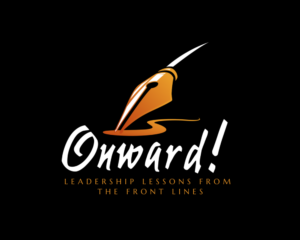I’m a bit of a space geek. So last Thursday morning, I set my alarm and blocked 30 minutes on my calendar to turn to YouTube and watch Space X attempt to launch its Starship and Super Heavy booster. I love watching Space X launches. They are masters of the live feed and their launches never disappoint. This one promised to be especially eventful as Space X was attempting to launch the largest rocket ever built, with twice the thrust of the Saturn V which took us to the moon so many years ago.
Below is a link to the launch itself. I’ve cut it to just before liftoff.
https://www.youtube.com/live/-1wcilQ58hI?feature=share&t=2658
The rocket’s launch and subsequent explosion kicked off a huge media debate about whether the launch was a success or a failure. Clearly, it did not meet all of its objectives: Several of the 33 booster rockets failed, the launch pad was completely destroyed by the thrust, the second stage failed to separate, and ultimately, the rocket had to be destroyed. However, as a student of leadership, the media response is frustrating. Because if you follow Space X and watched the Space X live feed, you understand how fantastic the supposed “failure” is and how much it will help Space X continue to revolutionize space travel. The difference is a big part of what makes Space X so successful.
From a leadership perspective, the most amazing part was the response of the crowd of employees AFTER the rocket blew up. They cheered! Sure, there was sadness and disappointment for a short time after destruction but it was brief. It felt like a collective, “well crap.” But following the pause, the crowd of employees began to cheer. Everything they’d worked so hard for so long just blew up — hundreds of millions of dollars — and they cheered.
More than almost any company I know, Space X embodies the ethos of “fail fast.” Space X has built a culture that is willing to push itself hard, try new things, and see what happens. They are built to iterate fast and learn fast. Most amazingly, they are willing to do it very publicly.
When you are faced with a new and difficult problem, you have a choice. You can sit at the table with tons of designers and engineers and attempt to plan for every scenario. This will take huge amounts of people, time and money. Option B is you build something, launch it, and learn. Action is your buzzword. You prepare to fail, learn and go again.
Space X chose Option B.
I stand in awe. I would love to tell you that I could do that. I’m not sure, but I think it is worth trying to emulate in some way shape or form. Because the reality is that we are operating in an environment that is constantly changing. We’re all dealing with technology. With the pace of change across a number of fronts only speeding up — from carbon insets and offsets to services, to the myriad of technologies — we need to capture some of the Space X pixie dust.
What does a successful failure look like?
- Failure from boldness. There are two types of failures. Failures of omission and commission. Failures of omission is where we’ve failed to do something; we failed to plan, failed to check (attention to detail) or – the ultimate failure in my book – failed to try. While failures of omission can ultimately lead to success if you learn from them, they are more challenging in the short term. Failures of commission – where you tried something bold, put yourself out there, and took a risk to achieve something new – they are the opposite. Failure is simply an output of an experiment. You tried something, you learned, you try again. Space X’s failures are failures of commission – action – and are what we’re looking for first and foremost.
- Low risk. I once read that successful entrepreneurs think of risk differently. In managing downside risk, they tend to ask themselves, “Can we survive the failure of this risk?” They know the upside, so if they can survive the downside, they tend to act. They fail small. While Space X’s rocket explosion was spectacular, for a company of Space X’s size, it was low risk. It was unmanned and launched over the ocean. They used low-cost materials to build it and low-cost fuel (methane) to power it. Compare this to its competitor, the Space Launch System run by NASA which is expected to cost over $2 billion per launch. You can’t get those wrong.
- Consistent with the ultimate mission. There is another type of failure out there – failure to stay true to the mission. A failure of strategy. If a company is not just chasing something new but constantly changing direction, it can be disruptive as the lessons may not apply to the larger mission. In Jim Collins’ book, Great By Choice, he explains that great companies will often fire several bullets at a target until they hit it and then fire a cannonball, investing heavily after they know where the target it. The key, however, is that the bullets are fired toward a consistent target.
- Prepare to fail & learn. Companies that fail well are prepared for failure. It’s part of the process, so the goal is not to “succeed” early but to learn fast. Space X loaded the Super Heavy with thousands of sensors and cameras. They had the systems to capture the launch data from every angle they could think of which would allow them to quickly understand what went wrong and why and work those learnings into the next iteration. They have already begun building the next rocket, using the learnings from building the first. They built them out of common materials like stainless steel. They use common fuel, methane, and have simplified and made a production line of rocket engines. This all allows them to iterate quickly and far less expensively than their competitors.
- Progress not perfection. One of my favorite sayings is “Perfection is the enemy of progress.” Aiming high is great, but the immediate goals should be far more modest. Sure, Space X wanted to have everything go right. They worked incredibly hard towards that goal. But they were very clear from the beginning that the realistic goals were far more modest. As Musk said before the launch, “I’m not saying it will get to orbit, but I am guaranteeing excitement.” And “Success is not what should be expected…that would be insane.” or, as Space X President, Gwynn’s Shotwell, told a conference in February, “The real goal is not to blow up the launch pad.”
I think we get the notion of failure wrong. We lump different types of “failures” together because they make great headlines. But in doing so, we risk confusing our people too, failing to separate those who would fail from lack of vision, courage, and effort from those who fail because of boldness, daring, and creativity. Doing something new and leading change is hard. You are moving into the unknown. You can’t possibly get everything right and are very likely to fail along the way. We want people who have the vision and courage to move forward anyway. Those are the very people we want. Failure, under those circumstances, are not simply to be avoided but wholeheartedly embraced and celebrated. And we’re not celebrating the “failure” but the courage and bravery and the learnings we know will come from it.
Does this approach work?
It certainly has for Space X. What began with the first rocket in 2006 is now the largest space launch company in the world. In 2022, it carried over half the total weight to space globally. It launches at a rate 10 times that of its nearest American competitor. They use many of those cheap launches to carry thousands of small satellites to orbit to provide global high-speed internet, which we use at two sites where land-based internet is not available. As for the value of the company? From start-up to valued at $137B based on its latest round of funding. And when the Super Heavy and Starship ultimately succeed it will revolutionize space travel more than anything else since the first human went to space.
So go for it! Be bold. Try something new. Plan for it. Lean into it. Temper expectations. Make sure you (and we) can survive it. Prepare to fail and prepare to learn. Then do it again, and again, until you succeed.
Onward!
Jeff





